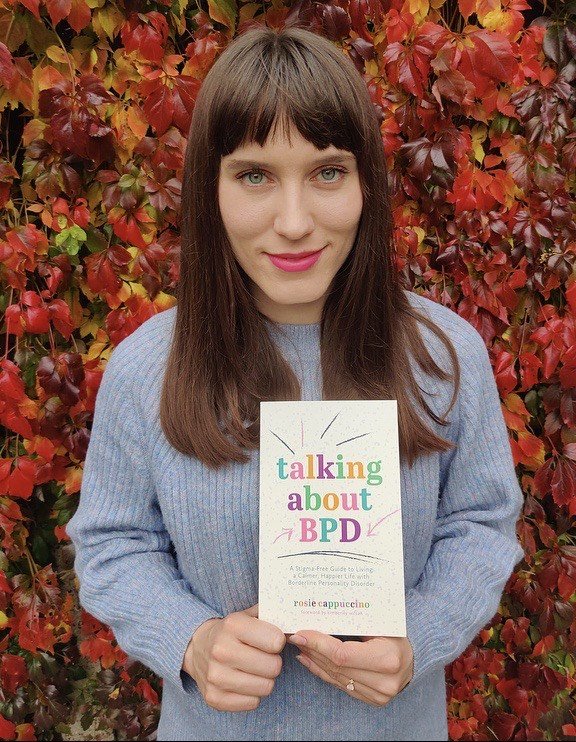God gives grace only for the present moment. Hence it is not to be wondered at if we lose our peace when we leave the present.
St. Therese of Lisieux
The high school I attended was St. Therese of Lisieux. I walked the hallways for 4 years, seeing pictures of this saint, hearing rumblings on the announcements of “Saints days” and “prayers.” I spent most of my high school being ill, sick, physically and mentally, and in the guidance office. I would still say now, that my adolescence was by far my most symptomatic and painful years of living this life. This makes sense, as between the ages of 14 to 18, I knew no skills, had no accurate diagnosis, I was a child so I could not make choices or advocate for myself, invalidation was the highest as I was dependent on others to make all decisions, my voice was neglected. I believe that even well meaning adults just didn’t understand what was going on in my body, mind, soul. I watched myself descend into madness with no understanding that this even happened to people, or that people got out of it.
It was a different time. There was no “Bell Let’s Talk” in schools, or teacher AQ courses on mental health. A lot has changed since then about mental health awareness, and while we still have so far to go. I have seen that high schools have improved greatly at assessment, awareness, connection to resources and support, I am grateful that this has improved for youth.
St. Therese of Lisieux was the only saint I knew of during those 4 years, and my knowledge then, was basically, that she was called a “little flower.” This knowledge truly didn’t help me much at the time, it was simply just a label for her and I didn’t understand what it meant, what her life was like, or if she would be able to help me. As I reflect back now on the life of St. Therese of Lisieux, and as I read her memoir, The Story of a Soul, I fall in love with her, as I do with many of the Saints.
St. Therese was a Carmelite nun whom had a calling from a very young age to become a nun and devote her life to Jesus. She died at a young age as well, she did not live out this vocation on earth for very long. She died of tuberculosis and suffered much, even with thoughts of suicide as she lay helpless and sick in bed from this disease that was killing her (as told by Fr. James Martin in My Life with the Saints). It is said that she even told the other nuns to remove the medication around her as she felt tempted to “end it all” as she lay suffering from this disease. She also often compared herself to St. Teresa of Avila, whom she called the big Teresa, and that she was only the little Teresa, not able to do as much.
St. Therese of Lisieux was human which is something I truly love about the Saints. They are human. They have human struggles, human desires, human needs, they desire to To be loved, to be liked, to fit in with the others, to want to escape suffering, to question their faith, they are fully human. They offer wisdom. They are “loved sinners” too.
St. Therese believed that as she was to die young, she would commit to finishing her vocation in heaven, sending little roses, “signs” to God’s children on earth, as answered prayers, as comfort, as the sign that she is with them. As a reminder of the “little way.”
A few months ago I was having a poorer health time, and I was mostly lying in bed for two days. I had just been reading about St. Therese, a few days prior this period of illness. I felt frustrated, I noticed several unhelpful thoughts arising such as: I am useless, this is a waste of life, why is this happening, I hate this, to name a few. As I lay in anger one day during this time, I turned to my side and noticed something interesting that to me was interpreted as a “sign” a rose from heaven. I have a rose tattoo on my left wrist, which I have had for about 5 years. The reason this was “a sign” a rose from heaven, was because, when I got this tattoo many years ago, it had nothing to do with this saint, or anything religious, and suddenly now, in my moment of physical distress, and psychological pain, this rose appeared to me to take on new meaning, it was a little flower, sent from heaven, a rose from St. Therese of Lisieux…
Now, when I look at my wrist each day, I cannot help but make the connections. It has been changed because of that experience. Even now as I write this, this rose on my wrist carries new meaning, even as this was never the intent of this tattoo when it was done. St. Therese believed in the “little way.” She said God cares about our little, simple actions, we don’t have to do huge things, like perform miracles, or have big mystical moments, or accomplish big deeds to please God.
And perhaps many of us want to. I get that. I am naturally ambitious and wanting to accomplish “more.” I often get caught up in desire for big things. I had big dreams for my life, and many of those things did not come to fruition in the way I hoped. I struggle to reconcile the beauty of the “little way” of the value of being small with living this earthly life and this need to strive. And also, I believe that this is the path we are all somehow called to. I also find this frustrating and hard, and freeing—all at the same time.
We live in a society that doesn’t value the “little flowers” the little things, the small deeds, as signs of goodness and virtue and success. And still, I know, in my heart of hearts, that those little things, are so pleasing to the Beloved. And the vocation of all of God’s kids.
My wrist rose now reminds me of this truth today.
As a participant in DBT skills, I commit to being one mindful. “God gives grace only for the present moment. Hence it is not to be wondered at if we lose our peace when we leave the present.” -St. Therese of Lisieux
I love how this quote also gives validation to that feeling of “lost peace” which we all have, when we ruminate about the future and past.
I continue to draw natural connections between the lives and wisdom of the Saints, Christianity, and dialectical behaviour therapy. One mindfully is a zen concept included in DBT but also has its place in other spiritual traditions and practices. It reminds me of the Psalm “Be still and know that I am God.” Repeating this to myself several times could be a way to practice this skill of one mindfully.
One-mindfully is called a “How Skill” in the mindfulness module of DBT. It is not enough to just tell others, or ourselves to “ live in one moment.” For most people, and especially those with Borderline traits, or emotional sensitivity; I believe that one mindfully has to be practiced, cultivated, repeated, with intention, over and over and over. It is not enough to say it, I have to live it, commit to it, be “obedient” with this practice. It’s not an overnight achievement. Being one mindful is a journey.
Grace, St. Therese reminds us, is just for one moment, just now. It’s not for the future, or even 20 minutes from now, God’s grace is for this one moment. Marsha Linehan reminds us that awareness of this one moment is not suppressing or avoiding what comes up in the present, it is just noticing and allowing it (p. 209-210, Skills Training Manual). Doing only one thing at a time is not usually how people like to operate, she says, we think we can get more done by multitasking and over planning. But doing one thing, and attention to one moment, is for both physical and mental situations. This involves actively letting go of past and future, however, Dr. Linehan says, there is “room for worrying about the future, she even suggests that if you are going to worry about the future, set aside a time to only do that ONE thing, for a period of time (p. 210).”
So technically we can practice one mindfully about the future! (But only in that “time”…)
What will you do today, or be, that is a little thing, a “little flower” to add to God’s garden?
Will you practice being one mindful?
Other little things could be:
Maybe you will hold a door open?
Provide a donation of extra food when you do your groceries?
Or even, being “one mindful” in interactions, when you are at the bank, perhaps giving your full attention the teller whom is helping you?
Maybe it’s “being still” in prayer, and allowing Grace to be for this one moment.
This is not easy, I see this as a skill, not a gift that you just have or don’t have. We can all learn how to do this, and it can help all of us in some way. I have a lot of practicing to do too. I am not perfect at “one mindfully” and I feel a Hope that as I continue to practice this I may notice more “little flowers” in the present of my life.
Peace be with you.











